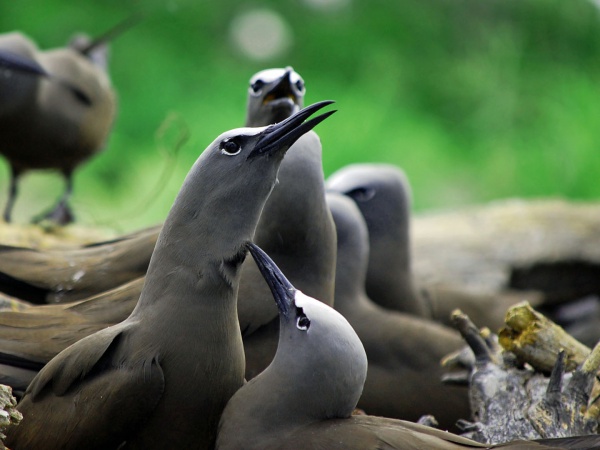Facts About Brown noddy
The brown noddy, often referred to as the common noddy, is a captivating seabird from the Laridae family. It is the largest among the noddy species, distinguishable by its dark brown plumage, which sets it apart from its black noddy relative. This tropical bird has a widespread distribution, inhabiting regions from Hawaii to the Caribbean in the Pacific Ocean, and from the Red Sea to the Seychelles and Australia in the Indian Ocean.
Brown noddies are social birds that prefer to nest in colonies. They usually establish their nests on cliffs, in trees, or on shrubs, although they sometimes choose the ground. During each breeding season, a female brown noddy typically lays a single egg.
The brown noddy was first scientifically described by Carl Linnaeus in 1758. It belongs to the genus Anous, and its specific name, *stolidus*, intriguingly means "stupid" or "foolish." There are four recognized subspecies of this bird.
In terms of appearance, the brown noddy measures between 38-45 cm in length and has a wingspan of 75-86 cm. It features dark chocolate-brown feathers, a pale-grey or white crown and forehead, a narrow white eye-ring, a long wedge-shaped tail, and dark feet and legs.
Regarding behavior, brown noddies are known for their colonial nesting habits. They construct platform nests from sticks and twigs on cliffs, trees, or bushes. During courtship, the male and female engage in bowing and nodding displays, along with courtship feeding and flights. The female lays a single egg that is pinkish-cream with lilac and chestnut markings. Both parents share the responsibility of incubating the egg for about 33 to 36 days. Once the chick hatches, it grows rapidly and is ready to fledge in about six to seven weeks. Brown noddies primarily feed on small squid and fish, which they catch by swooping over the water.
